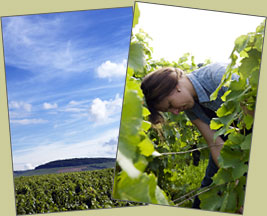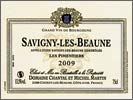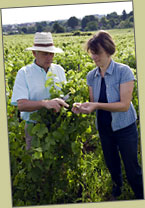



• Savigny les Beaune (Village, red) •
Grape variety: Pinot Noir
Age of vines: 53 years
Location and soil type: Les Pimentiers, same characteristics of the plot as above. This wine always offers great delicacy.
Ageing potential: 6 to 8 years.
Food and wine matching: White meat, cream sauces, roastbeef.
Tasting notes:
2006: Colour: Lovely garnet colour, bright with a slightly brick cast. Nose: Expressive and fruity with aromas of kirsch and sweet spices. Palate: Open and fruity, Complex aromas on retrolfaction of red fruits. Full and persistent. Ready to drink. Bettane & Desseauve 2009.
2005: Colour: garnet. Nose: fruity, fine and lightly spicy, with raspberries and a hint of pepper. Palate: fresh and fruity, although with a slight astringency; finishes well on the fruit with some mineral notes. Best from 2009-on. Coup de coeur, Guide Hachette 2009.
2004: ”Beautiful garnet color with purple reflections. The nose is still somewhat closed, but there are odors of raspberry, spice, cloves and hints of oak. Soft on the palate, the wine exhibits good acidity with fresh, tart raspberry flavors (bottled in mid-November 2005)”. Guide Hachette 2007.
 About Savigny les Beaune:
About Savigny les Beaune:
Savigny les Beaune is one of the largest communes on the Côte de Beaune. Here the vines cover a total of 383 hectares. The vineyards run from up behind the village down to the D974 road close to the Corton hill.
East of Savigny les Beaune is where you'll find the majority of the vines. Here the valley of the river Rhoin opens up into flatter land. In the middle of the plain is 150 hectares of village land. The 22 premier crus are divided into two groups – one along the Paris-Lyon motorway and one on the Pernand-Vergelesses side.
Savigny les Beaune produces more red wine than any other commune on the Côte de Beaune. There is white Savigny les Beaune, both on village and premier cru level, but the output is only just above ten percent of the annual production.
![]()